![]()
Cyber's Antique Video Games Site

A Brief History of Arcade Games

Spacewar (1962)
The first recognised computer game was called Spacewar and was programmed on an university mainframe by an MIT student called Steve Russell in 1962. In the game two players controlled a spacecraft each with the sole objective to destroy the other player.

Pong (1972)
The first game to be released to commercial success in pool-halls and bars in the U.S. was written by Al Alcorn in 1972. A commercial version of Spacewar had been tried but had been found too complicated for patrons. Pong was an electronic, simplified rendition of table tennis (or ping-pong) with two players each controlling a stick-like bat.

Space Invaders (1978)
Space Invaders was created by Toshihiro Nishikado in 1978 and was such a smash-hit in department stores and restaurants in addition to the usual video game dens that some shop-owners cleared out all stock to make space for the machines - thus creating the first dedicated game arcades. The game was so successful that it caused a nationwide coin shortage in Japan!
The game player was charged with defending Earth against a descending fleet of hostile aliens with a horizontally mobile gun base and the help of four unmoving 'buildings' which would block the alien's bombs until they were eroded away. The game became harder with the player's progress with the aliens speeding up as they were destroyed.
N.B. Although this game only displayed in black and white, colour-tinted plastic fitted over the screen gave the impression of the game having more than two colours.
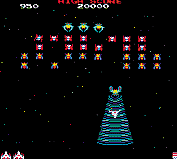
Galaxian (1980)
1979 saw the arrival of the first true colour game - Galaxian. As in Space Invaders the player controlled a ship which had to destroy waves of aliens but this time the aliens dive towards the player whilst dropping bombs. Many sequels followed, notably Galaga which was the first video game to include a bonus round between levels.
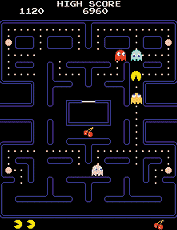
Pac Man (1980)
The game designer Moru Iwatani became so sick of the endless shooting games that were being turned out that in 1980 he decided to create a cartoon-like game that would appeal to women as well as to the (predominantly) male players. This game was Pacman wherein the player controlled a yellow circle with a large mouth whose task was to eat the dots littered a maze while avoiding the pursuing ghosts. The tables could be turned on the ghosts, however, by consuming one of four 'power pills'. This game remains the most popular arcade game EVER and was the first to follow through with a huge range of merchandise.
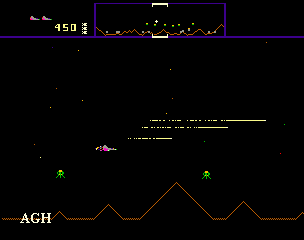
Defender (1980)
Defender was created by Eugene Jarvis in 1980 and was radically different from the alien-zapping games that had gone before. The player controlled a space ship which flew around a planetoid but only a small section of the surface was displayed at a time. The player's ship remained more or less central on the display while the planetoid moved - or scrolled - around the ship. The feature that made this game really unique was that the game action carried on outside of the player's limited view.

Battlezone (1980)
1980's Battlezone was the first game that represented a true 3-D environment (using vector graphics) for the player to explore in their simulated tank. The U.S. Army were sufficiently impressed with this game that they commisioned Atari to create improved versions to help with their tank training.
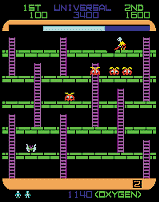
Space Panic (1981)
In 1981, Space Panic was released by Universal. This was the first so-called 'platform' game and involved the player running across the brick floors and climbing up and down ladders to avoid the aliens whilst at the same time trying to find a suitable spot for the player to dig a hole in the floor in which to trap an alien before filling the hole to kill it. A time limit for each stage was enforced by a decreasing oxygen supply.
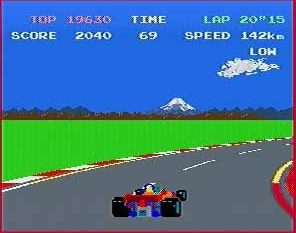
Pole Position (1982)
Atari and Namco jointly produced the Formula 1 racing game Pole Position which was the first attempt to make a realistic looking game. It displayed on-screen objects - sprites - at different sizes to simulate perspective and depth. Even today's racing games use some of the same techniques.
![]()
![]()